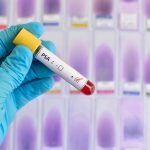Brain Pain Signature May be Same as Fibromyalgia for Other Conditions
Researchers believe that conditions which present with widespread symptomatic pain may be the result of pain centralization, like the pain in fibromyalgia.1 The pain in Fibromyalgia is recognized as being centralized.2 In other words, the central nervous system has taken charge of producing pain signals, which are not directly contingent upon nociceptive input. Chronic pelvic pain may also present with this type of central processing of pain. An NIH team is currently looking specifically at this similarity between chronic pelvic pain and fibromyalgia using fMRI imaging techniques.
The Study
The study looked at 1079 patients from the Multidisciplinary Approach to the Study of Chronic Pelvic Pain Research Network (MAPP) study. A clinical diagnosis of urological chronic pelvic pain syndrome (UCPPS) was assessed next to pain free controls as well as individuals with fibromyalgia. Participants were screened for pain severity, and a body map of their pain. A smaller group (UCPPS N=110; healthy N-49; fibromyalgia N=23) were assessed using fMRI. Not all UCPPS individuals reported widespread pain, however, those who did displayed increased gray matter in their brains and functional connections of sensorimotor and insular cortices in the exact same way in which brains appear in fibromyalgia, but not in healthy controls.
Widespread Pain May be More Effective When Central Nervous System is Addressed
Widespread pain is also correlated with decreased physical and cognitive function independent of pain severity. Treatment options for individuals with widespread pain may be more effective when they address the central nervous system. This includes pain education, and physical therapy which strives to change pain perception and experience.
Sources
- Kutch JJ, Ichesco E, Hampson JP, et al. Brain signature and functional impact of centralized pain: a multidisciplinary approach to the study of chronic pelvic pain (MAPP) network study. Pain. 2017
- Sarzi-puttini P, Atzeni F, Mease PJ. Chronic widespread pain: from peripheral to central evolution. Best Pract Res Clin Rheumatol. 2011;25(2):133-9.
Image Copyright: <a href=’https://www.123rf.com/profile_citalliance’>citalliance / 123RF Stock Photo</a>
 Node Smith, associate editor for NDNR, is a fifth year naturopathic medical student at NUNM, where he has been instrumental in maintaining a firm connection to the philosophy and heritage of naturopathic medicine amongst the next generation of docs. He helped found the first multi-generational experiential retreat, which brings elders, alumni, and students together for a weekend campout where naturopathic medicine and medical philosophy are experienced in nature. Three years ago he helped found the non-profit, Association for Naturopathic ReVitalization (ANR), for which he serves as the board chairman. ANR has a mission to inspire health practitioners to embody the naturopathic principles through experiential education. Node also has a firm belief that the next era of naturopathic medicine will see a resurgence of in-patient facilities which use fasting, earthing, hydrotherapy and homeopathy to bring people back from chronic diseases of modern living; he is involved in numerous conversations and projects to bring about this vision.
Node Smith, associate editor for NDNR, is a fifth year naturopathic medical student at NUNM, where he has been instrumental in maintaining a firm connection to the philosophy and heritage of naturopathic medicine amongst the next generation of docs. He helped found the first multi-generational experiential retreat, which brings elders, alumni, and students together for a weekend campout where naturopathic medicine and medical philosophy are experienced in nature. Three years ago he helped found the non-profit, Association for Naturopathic ReVitalization (ANR), for which he serves as the board chairman. ANR has a mission to inspire health practitioners to embody the naturopathic principles through experiential education. Node also has a firm belief that the next era of naturopathic medicine will see a resurgence of in-patient facilities which use fasting, earthing, hydrotherapy and homeopathy to bring people back from chronic diseases of modern living; he is involved in numerous conversations and projects to bring about this vision.









